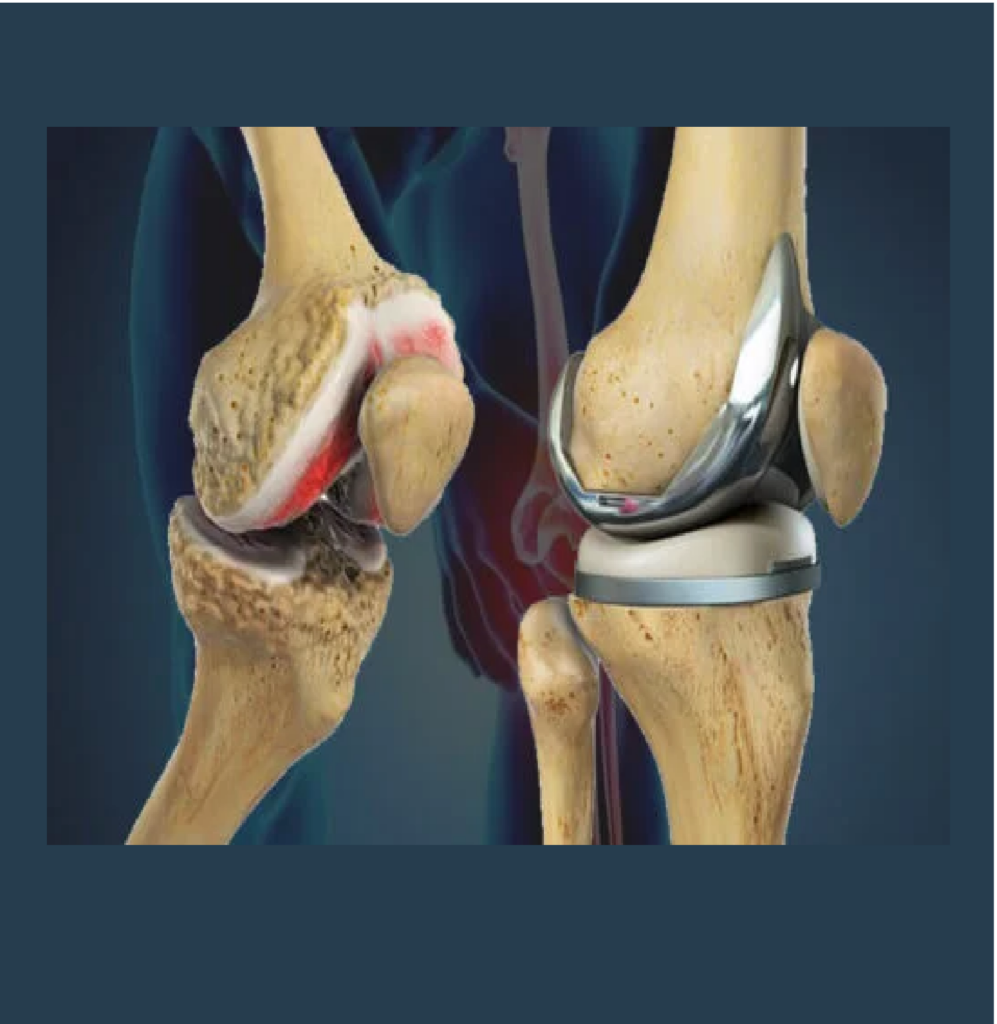Types of Knee Prostheses: A Comprehensive Guide by Dr. Mostafa El-Nemr
Knee replacement surgery is one of the most common orthopedic procedures, especially under the expert care of specialists like Dr. Mostafa El-Nemr. With over 15 years of experience, Dr. El-Nemr has extensive expertise in performing these complex surgeries using the latest global techniques, enabling his patients to regain their quality of life with confidence and ease.
What Are the Types of Knee Prostheses?
Knee prostheses vary based on the patient’s medical condition and specific needs. Under Dr. Mostafa El-Nemr’s supervision, the most suitable type is chosen to ensure optimal results. This guide covers the components, types, and materials used in knee prostheses.
1. Components of Knee Prostheses
Dr. Mostafa El-Nemr utilizes high-quality knee prostheses made of durable and biocompatible materials. These components include:
- Metal Component: Typically made of cobalt-chromium alloys or titanium, chosen by Dr. El-Nemr for their strength and resistance to wear.
- Plastic Liner: Made from high-density polyethylene, it acts as a cushion to reduce friction between the metal surfaces.
- Posterior Stabilizer: Provides additional support to the joint, particularly in cases where the ligaments are weak.
2. Types of Knee Prostheses
A. Total Knee Replacement (TKR)
This is a primary specialty of Dr. Mostafa El-Nemr and is used for patients with extensive damage to both sides of the knee. The components of this type include:
- Femoral Component: A metal part attached to the lower end of the femur.
- Tibial Component: A metal part fixed to the upper end of the tibia.
- Plastic Liner: Placed between the metal components to ensure smooth movement.
Advantages:
- Restores natural knee movement efficiently under Dr. El-Nemr’s expertise.
- Durable, lasting 15-20 years.
Disadvantages:
- Requires removal of a significant amount of natural bone.
- Longer recovery time.
B. Partial Knee Replacement (PKR)
Ideal for patients with limited damage in one section of the knee. Dr. El-Nemr carefully selects patients who can benefit from this procedure.
Advantages:
- Minimally invasive.
- Preserves most of the natural tissues, such as ligaments and bones.
- Faster recovery.
Disadvantages:
- Unsuitable for patients with widespread knee damage.
- Shorter lifespan compared to total replacements.
C. Rotating Platform Knee Prostheses
This type allows greater freedom of movement, enabling rotational motion alongside forward and backward movement. Dr. El-Nemr recommends it for active patients seeking a wide range of motion.
Advantages:
- Mimics the natural movement of the knee.
- Less prone to wear due to even load distribution.
Disadvantages:
- Complex surgical procedure.
- Higher cost compared to other types.
D. Constrained Knee Prostheses
For cases where ligaments cannot provide stability, Dr. El-Nemr opts for this type of prosthesis.
Advantages:
- Offers high joint stability.
- Suitable for complex cases.
Disadvantages:
- May limit the natural range of motion.
- Requires more extensive bone removal.
3. Materials Used in Knee Prostheses
Dr. Mostafa El-Nemr ensures the selection of materials that guarantee the safety and quality of knee prostheses, including:
- Metals: Titanium and cobalt-chromium, which are strong and lightweight.
- Plastics: High-density polyethylene to minimize friction.
- Ceramics: Highly resistant to wear but less flexible compared to metals.
4. How to Choose the Right Type for the Patient
Selecting the appropriate prosthesis depends on several factors carefully evaluated by Dr. El-Nemr:
- Age of the Patient: Younger patients often need longer-lasting prostheses.
- Activity Level: Active patients require prostheses that allow greater motion.
- Ligament Condition: Weak ligaments may necessitate constrained prostheses.
- Medical History: Conditions like osteoporosis or diabetes must be considered.
5. Recent Advancements in Knee Prosthesis Technology
The field of knee prostheses has witnessed significant advancements, many of which are utilized by Dr. Mostafa El-Nemr:
- 3D Printing: Used to create custom prostheses tailored to the patient’s knee size and shape.
- Robotics: Guides the surgeon for precise placement during surgery.
- Smart Materials: Mimic natural tissue and reduce immune system rejection.
6. Post-Surgery Care for Knee Prostheses
Dr. Mostafa El-Nemr provides the following recommendations to maintain the prosthesis:
- Adhere to a physical therapy program to improve mobility and strengthen muscles.
- Avoid activities that place excessive stress on the prosthesis, such as running and jumping.
- Schedule regular follow-ups with the doctor to monitor the prosthesis.
- Maintain a healthy weight to reduce pressure on the knee.
Conclusion
Under the guidance of Dr. Mostafa El-Nemr, choosing the right type of knee prosthesis is a critical step in improving a patient’s quality of life. With his extensive experience and use of the latest technologies, Dr. El-Nemr ensures the best possible outcomes for his patients. If you are considering knee replacement surgery, Dr. Mostafa El-Nemr is the ideal expert to provide a detailed consultation and comprehensive treatment plan.

